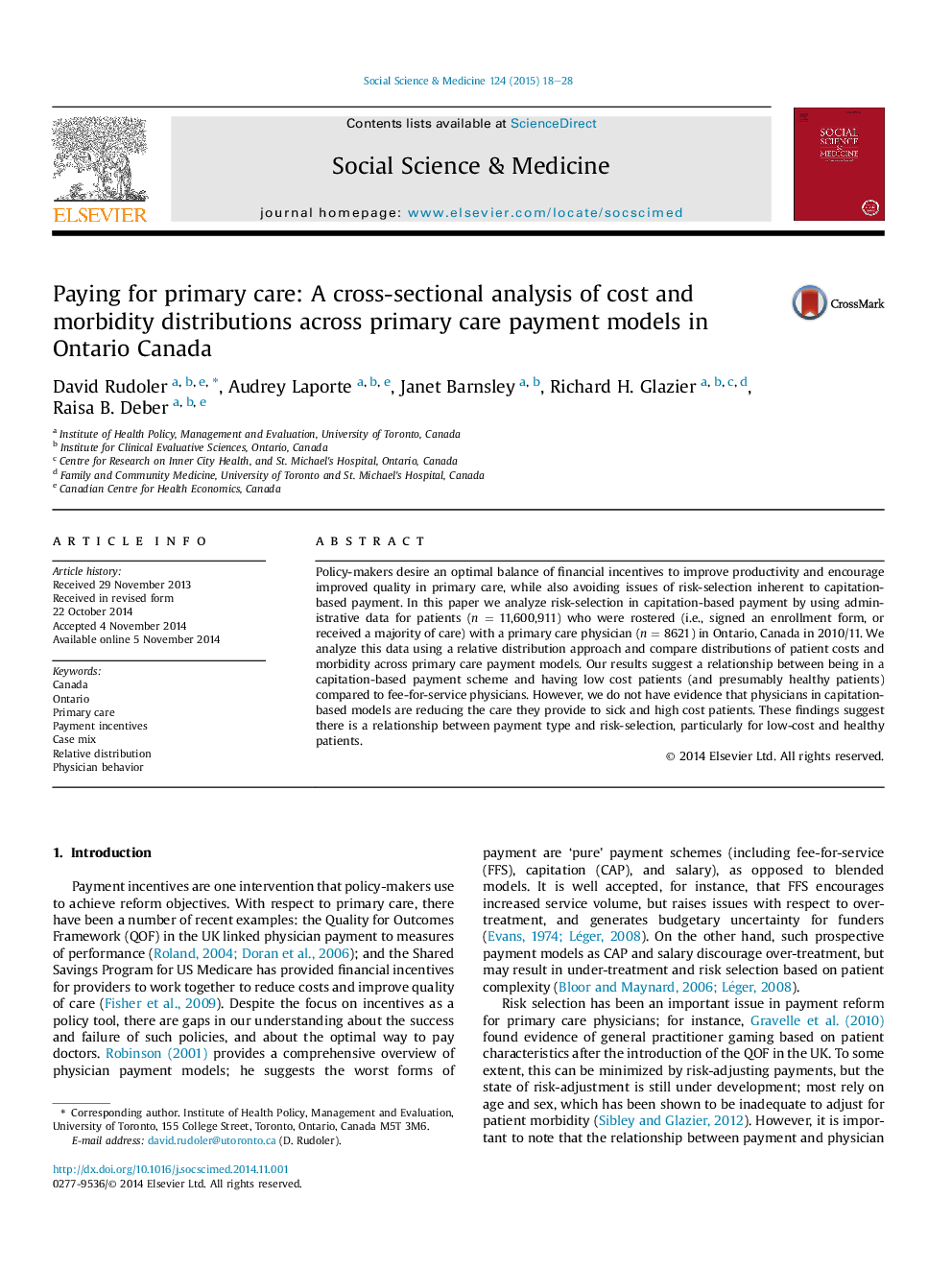| Article ID | Journal | Published Year | Pages | File Type |
|---|---|---|---|---|
| 7333768 | Social Science & Medicine | 2015 | 11 Pages |
Abstract
Policy-makers desire an optimal balance of financial incentives to improve productivity and encourage improved quality in primary care, while also avoiding issues of risk-selection inherent to capitation-based payment. In this paper we analyze risk-selection in capitation-based payment by using administrative data for patients (n = 11,600,911) who were rostered (i.e., signed an enrollment form, or received a majority of care) with a primary care physician (n = 8621) in Ontario, Canada in 2010/11. We analyze this data using a relative distribution approach and compare distributions of patient costs and morbidity across primary care payment models. Our results suggest a relationship between being in a capitation-based payment scheme and having low cost patients (and presumably healthy patients) compared to fee-for-service physicians. However, we do not have evidence that physicians in capitation-based models are reducing the care they provide to sick and high cost patients. These findings suggest there is a relationship between payment type and risk-selection, particularly for low-cost and healthy patients.
Related Topics
Health Sciences
Medicine and Dentistry
Public Health and Health Policy
Authors
David Rudoler, Audrey Laporte, Janet Barnsley, Richard H. Glazier, Raisa B. Deber,
